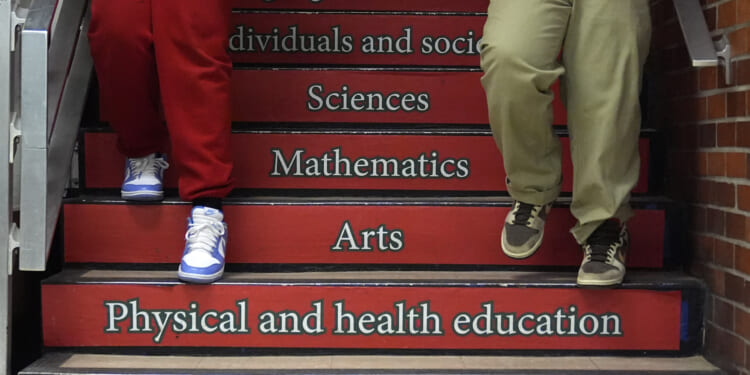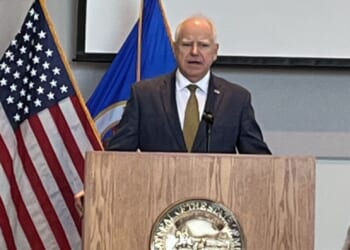New Illinois State Board of Education data shows low-income and minority public school students are struggling, scoring well below average.
Low-income third- through eighth-grade students were 16 percentage points lower than the statewide average during the 2024-2025 school year for reading and math, new Illinois Report Card data shows. Black third- through eighth-grade students saw proficiency levels 21 to 23 percentage points lower. Hispanic students were 12 to 13 percentage points lower.
The data also shows low-income and minority students are less engaged in school. They recorded higher rates of absenteeism last school year compared to their peers.
That’s after the state artificially inflated the number of students meeting standards by lowering the scores needed to be considered “proficient” in reading and math in 2025. It means many students are now reported as “proficient” but are struggling and may not receive the support they need to succeed in school.
There could be hope for these students if Gov. J.B. Pritzker and Illinois leaders opt into the Federal Scholarship Tax Credit program. It would allow students to receive scholarship funds to help them find a tutor, get special lessons or help with curriculum.
Most low income and minority students did not meet proficiency in 2025
The Illinois State Board of Education recently released test data from spring 2025. It shows many Illinois public school students are not receiving the preparation they need to perform proficiently in core subjects. This problem is even more acute among low-income students and Black and Hispanic students.
Just 38% of third- through eighth-grade students from low-income families met proficiency standards in reading and 22% in math this spring. The proficiency rate of Illinois’ low-income students was 16 percentage points lower in reading and math compared to the statewide average for all students.
The disparity in performance is similar among Illinois public high school students. This spring, just 33% of low-income 11th grade students met reading proficiency and 20% met math goals on the ACT. The proficiency rate for low-income high school students on the ACT was 19 percentage points lower than the statewide average in reading and math.
Black and Hispanic students also struggled to meet proficiency, especially compared to white students. Just 32% of Black students in grades 3 through 8 scored at proficiency in reading and 15% in math, while 41% of Hispanic students scored at grade level in reading and 25% in math.
There were 64% of white students in grades 3 through 8 proficient in reading and 50% in math.
Demographic achievement gaps were also prevalent among high school students. This spring, a lower proportion of Black and Hispanic students scored as proficient on the ACT in both reading and math compared to white students.
Chronic absenteeism hits low-income students and minority students harder
Absenteeism has remained high in Illinois after it peaked following pandemic closures. In 2025, one-quarter of Illinois students were chronically absent, or missed 10% or more of the school year without an excuse.
But the issue is even more acute among Illinois’ low-income students and minority students: 35% of low-income students were chronically absent, 39% of Black students and 32% of Hispanic students.
Illinois public schools are struggling to engage low-income and minority students, and this should be a warning for parents. Frequent absences from school put students at higher risk of poor outcomes, such as dropping out of school and lower academic achievement.
Illinois must engage low-income and minority students to better ensure academic success
Low-income and minority students are struggling to meet proficiency in reading and math at greater rates than the statewide average. At the same time, 1-in-3 or more were chronically absent – outpacing the average statewide chronic absenteeism rate.
These statistics paint a bleak picture for many Illinois students, particularly those who are minorities or low-income.
But more can be done to help ensure Illinois students are prepared for their future. That’s why the Federal Scholarship Tax Credit program is so important. If Pritzker opts into the program, the scholarship funds can be used by students in public or private schools for educational services such as tutoring, additional educational classes, books or online educational materials, fees for standardized or college admission exams and fees for dual enrollment.
This means public school students who may be struggling in certain academic areas or needing extra help or materials will be able to find the support or opportunities they need.
Illinois leaders can provide a lifeline to struggling Illinois students, including the many low-income and minority students lagging academically. The only question is whether Pritzker and Illinois lawmakers will let Illinois students benefit from the donor-supported help.











